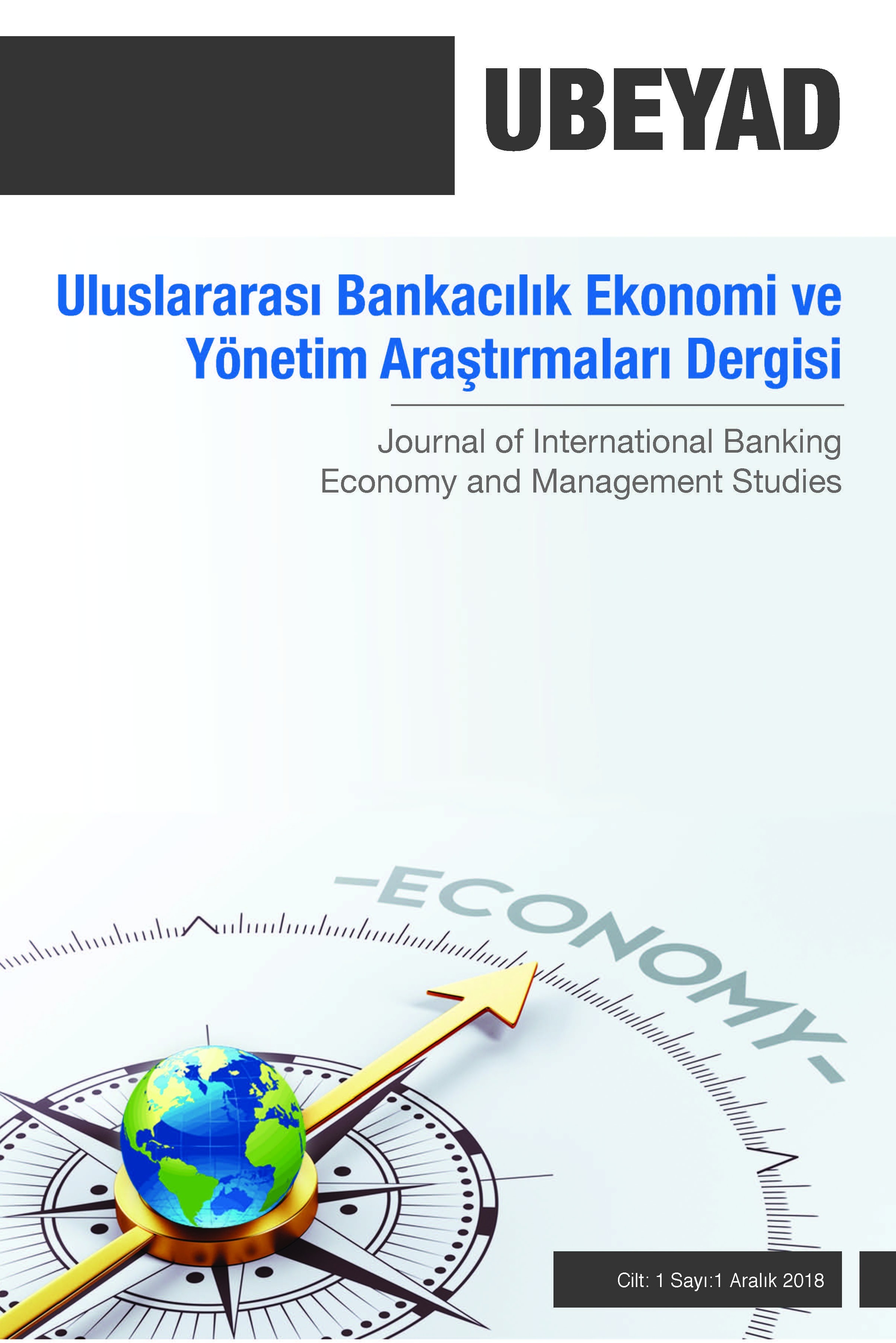Batı Afrika Ekonomik ve Parasal Birliği'ne Üye Ülkelerin Ekonomik Gelişmeleri
Batı Afrika Ekonomik ve Parasal Birliği (BAEPB), Batı Afrika Parasal Birliği (BAPB)’in yerini almak ve Batı Afrika Frank bölgesindeki CFA Frank devalüasyonundan sonra kalkınma politikalarının oluşturulması ve uygulanmasına yönelik bir çerçeve oluşturmak amacıyla Ocak 1994 yılında kurulmuştur. Bu çalışmanın genel amacı, 2005 ve 2014 yılları arasında Batı Afrika Ekonomik ve Parasal Birliği (BAEPB)’in sekiz az gelişmiş üye ülkeleri olan Benin, Burkina Faso, Fildişi Sahili, Gine-Bissau, Mali, Nijer, Senegal ve Togo’nun ekonomik performansları ele alınmıştır. Çalışmanın tamamlanmasıyla Batı Afrika Ekonomik ve Parasal Birliği’ne üye ülkelerin ekonomik gelişmeleri hakkında elde edilen bilgiler ile ilgili sınırlı literatürün boşluğu doldurulmaya çalışılmıştır.
Anahtar Kelimeler:
afika
___
- KURUMSAL KAYNAKLAR1.Asia-Pacific Research and Training Network on Trade, Workin Paper Series No. 3. Duval, Y. (2006). Costs and Benefits of Implementing Trade Facilitations Measures under Negociations at the Wto: An Exploratory Survey.
- 2.BCEAO. (2013). Analyse de la Structure du Commerce Exterieur des Biens et Services de L'UEMOA, Dakar.
- 3.Harvard University, African Economic Policy Discussion Paper No. 54. McPherson, M. F. ve Rakovski, T. (2001). Understanding the Growth Process in Sub-Saharan Africa: Some Empirical Estimates.
- 4.The World Bank, Policy Research Working Paper No. 4152. François, J. ve Manchin, M. (2007). Institutions, Infrastructures, and Trade.
- 5.The World Bank, Policy Research Working Paper No. 4797. Hoekman, B. ve Nicita, A. (2008). Trade Policy, Trade Costs, and Developing Country Trade.
- 6.The World Bank, Policy Research Working Paper No. 5728. Ferro, E., Portugal-Perez, A. ve Wilson, J.S. (2011). Aid to the Services Sector. Does It Affect Manufacturing Exports?
- 7.The World Bank, Where to Spend the Next Million? Applying Impact Evaluation to Trade Assistance, Gourdon, J., Marchat, J.M., Sharma, S. and Vishwanath, T. (2011).Can Matching Grants Promote Exports? Evidence from Tunisia’s FAMEX II Programme.
- 8.West Africa Intitute. Seck, D. (2013). Proposed Architecture for an ECOWAS Common Currency Union.
- 9.Gomanee, K., Girma, S., ve Morrissey, O. (2002). “Aid, İnvestment and Growth in Sub-Saharan Africa”. Paper Prepared for the 10th General Conference of EADI. 19-21 September, Ljubljana, Slovenia.
- KONFERANSLAR
- 10.Königer, J., Busse, M., ve Hoekstra, R. (2011). “The Impact of Aid for Trade Facilitation on the Costs of Trading”. Proceedings of the German Development Economics Conference, Berlin, Germany.
- MAKALELER
- 11.Bougheas, S., Demetriades, P. O. ve Morgenroth, E. L. W. (1999). “Infrastructure, Transport Costs and Trade”. Journal of International Economics, 47(1): 169-89.Brenton, P. ve von Uexkull, E. (2009). “Product Specific Technical Assistance for Exports - Has It Been Effective?”. Journal of International Trade & Economic Development, 8(2): 235-254.
- 12.Cali, M. ve Velde, D. W. (2011). “Does Aid for Trade Really Improve Trade Performance?”. World Development, 39(5): 725-740.
- 13.Czubala, W., Shepherd, B. ve Wilson, J. S. (2009). “Help or Hindrance? The Impact of Harmonised Standards on African Exports”. Journal of African Economies, 18(5): 711-744.
- 14.Disdier, A. C., Fontagne, L. ve Mimouni, M. (2008). “The Impact of Regulations on Agricultural Trade: Evidence from the Sps and Tbt Agreements”. American Journal of Agricultural Economics, 90(2): 336-350.
- 15.Hansen, H., ve Tarp, F. (2001). “Aid and Growth Regressions”. Journal of Development Economics, 64: 547-570.
- 16.Hummels, D., Lugovskyy, V. ve Skiba, A. (2009). “The Trade Reducing Effects of Market Power in International Shipping”. Journal of Development Economics, 89(1): 84-97.
- 17.Lederman, D., Olarreaga, M. ve Payton, L. (2010). “Export Promotion Agencies: Do They Work?”. Journal of Development Economics, 91(2): 257-265.
- 18.Limao, N. ve Venables, A. J. (2001). “Infrastructure, Geographical Disadvantage, Transport Costs, and Trade”. World Bank Economic Review, 15(3): 451-479.
- 19.Otsuki, T., Wilson, J. S. and Sewadeh, M. (2001). “Saving Two in a Billion: Quantifying the Trade Effect of European Food Safety Standards on African Exports”. Food Policy, 26(5): 495-514.
- 20.Wilson, J. S. ve Abe, K. (2011). “Investing in Port Infrastructure to Lower Trade Costs in East Asia”. Journal of East Asian Economic Integration, 15(2).
- 21.Wilson, J. S., Mann, C. L. ve Otsuki, T. (2005). “Assessing the Benefits of Trade Facilitation: A Global Perspective”. World Economy, 28(6): 841-871.
- INTERNET KAYNAKLARI
- 22.Dünya Kalkınma Göstergelerihttp://databank.worldbank.org/data/reports.aspx?source=world-development-indicators (Erişim Tarihi: 02.11.2015)
- 23.Ekonomik Özgürlüğü Endekslerihttp://www.heritage.org/index/explore?view=by-region-country-year (Erişim Tarihi: 24.12.2015)
- 24.Batı Afrika Ekonomik ve Parasal Birliğin Örgütünün Kurumsal Yapısıhttp://www.uemoa.int/en/bodies-uemoa (Erişim Tarihi: 12.12.2015)
- 25.Batı Afrika Ekonomik ve Parasal Birliğine Üye Ülkelerin Ekonomik Gelişmelerihttp://www.worldbank.org/en/country/benin/overview (Erişim Tarihi: 19.03.2016)http://www.worldbank.org/en/country/burkinafaso/overview (Erişim Tarihi: 19.03.2016)http://www.worldbank.org/en/country/cotedivoire/overview (Erişim Tarihi: 19.03.2016) http://www.worldbank.org/en/country/guineabissau/overview (Erişim Tarihi: 19.03.2016)http://www.worldbank.org/en/country/mali/overview (Erişim Tarihi: 19.03.2016) http://www.worldbank.org/en/country/niger/overview (Erişim Tarihi: 19.03.2016)http://www.worldbank.org/en/country/senegal/overview (Erişim Tarihi: 19.03.2016)http://www.worldbank.org/en/country/togo/overview (Erişim Tarihi: 19.03.2016)
- ISSN: 2667-5358
- Başlangıç: 2018
- Yayıncı: Mehmet APAN
Sayıdaki Diğer Makaleler
Yenilenebilir Enerji ve Sürdürülebilir Kalkınma İlişkisi
Oğuz YILDIRIM, Fatme İsmail NURİ
Ücret Politikaları ve Gelir Dağılımı Eşitsizlikleri
Meltem FAHLIOĞULLARI, Gönül UZUN, Gülizar YILDIZ, Ümit İFTAR
Sağlık Kurumlarında Şiddete Karşı Bir Çözüm Önerisi: Sağlık Hizmetleri Pazarlaması
Batı Afrika Ekonomik ve Parasal Birliği'ne Üye Ülkelerin Ekonomik Gelişmeleri
Oğuz YILDIRIM, Yawa Monique Jennifer AWA
